

What if I told you that pipeline corrosion, a problem costing billions annually, can now be detected with mind-blowing precision? Yes, thanks to drones and sensors, we might be living in a disruption that’s shaking up the industry.
This innovation couldn't have come at a better time! As environmental safety becomes critical, these revolutionary tools are on the frontline. But are they really the game-changer they claim to be? You won't believe what comes next...
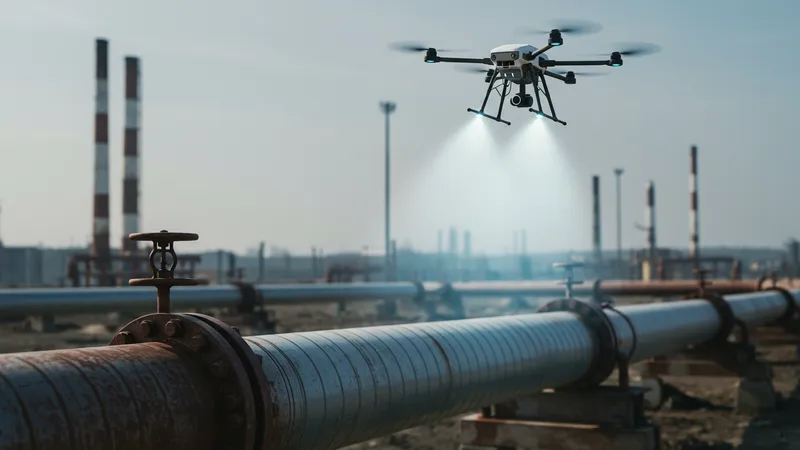
We’ve all heard how drones are making waves in various sectors, but using them for corrosion detection might seem a little far-fetched. However, these unmanned aerial vehicles (UAVs) are bristling with tech that can spot tiniest signs of corrosion, even in the most inaccessible locations. How, you ask? By using cutting-edge sensors that penetrate dense fog and capture high-resolution images. But that’s not even the wildest part…
The astonishing combo of drones and sensors screams future, but there's a juicy twist. These technologies are slashing inspection times by more than half, providing instant data that would take weeks with traditional methods. Not only do they offer a panoramic view, but they also gather real-time analytics for immediate decision-making. Just when you think it can’t get better, there's another layer to peel back…
What happens next shocked even the experts. Discover how this groundbreaking tech turns cost savings and safety on their heads. You won’t want to miss the jaw-dropping revelations we’re about to explore...
Imagine drones zipping through remote terrains, scanning pipelines with laser precision. The trick lies in their lightweight, versatile design which allows access to areas never thought possible. These drones are no longer just flying cameras; they're equipped with advanced infrared sensors that detect temperature variations indicative of corrosion spots. Astonishingly, these autonomous devices communicate data instantly back to control centers, even from miles away. But there’s one more twist...
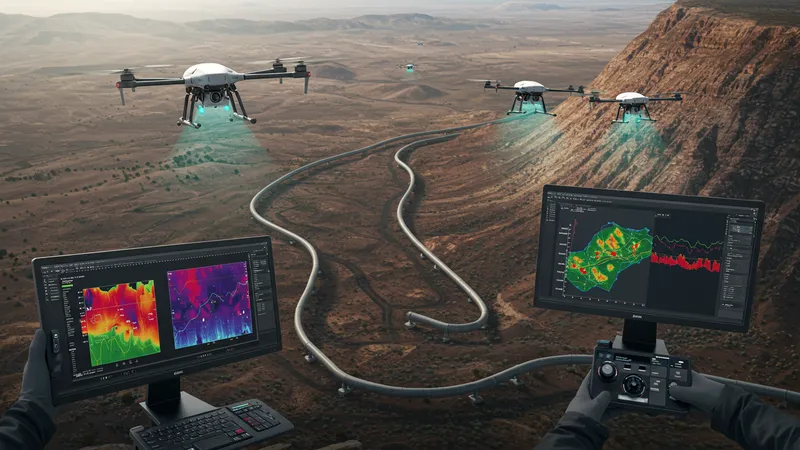
The rapid adaptability of lidar technology stands out. Originally used by NASA, lidar isn’t just for mapping atmospheric changes anymore. In the drone world, this allows for 3D mapping of pipelines, revealing details invisible to human eyes or traditional cameras. This isn't just for show; it’s transforming how we approach maintenance, minimizing downtime, and maximizing safety. However, what you read next might change how you see this forever.
Insider tips suggest the critical area is not just capturing data but its integration into predictive maintenance protocols. Drones, with their ability to assess vast networks swiftly, help anticipate potential failures before they happen. This is more than just fixing issues; it's predicting them, leading to a paradigm shift towards proactive management. Yet, that’s merely scratching the surface of what's unfolding...
The economic impact? It's profound. Companies are realizing significant cost savings, slashing inspection budgets by millions annually. This technology isn't just disruptive; it’s financially incentivizing. As operations become leaner, reinvestment into further technological advancements becomes possible. But hold onto your hats, because the real bombshell is still to drop...
While drones get the glory, let’s not underestimate the unassuming sensor networks. These modest devices work tirelessly alongside their flying companions, effectively weaving a web of information to catch every anomaly. Smart sensors, with their ultra-sensitive mineral-coated elements, can detect corrosive compounds even in harshest conditions. But wait, there’s yet another surprise in store...
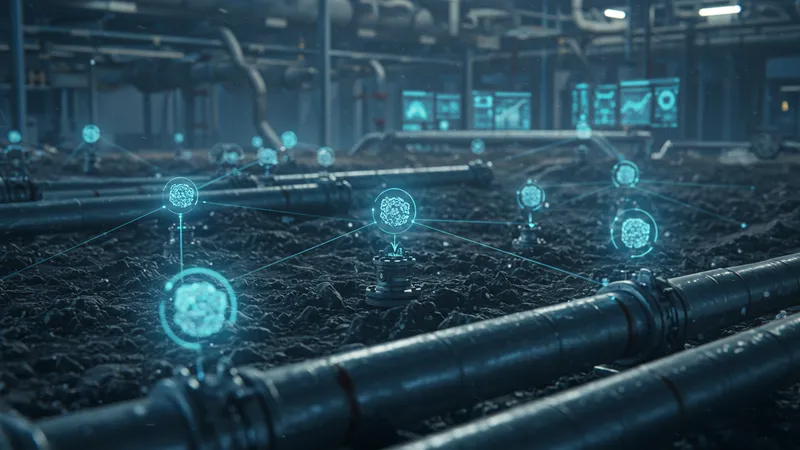
The integration of IoT technology streamlines operations, piecing together vast networks and delivering real-time alerts. Imagine sitting hundreds of miles away yet having a radar-like overview of your entire pipeline network. The data flow is seamless, and the real magic lies in predictive analytics, which allows companies to address problems before they escalate. However, that's not where the story pivots...
This unprecedented transparency into pipeline health comes with something even more significant—data-driven insights that inform future design innovations. Engineers are now leveraging this treasure trove of data to develop more durable pipelines, tailored to withstand specific environmental conditions. But here's the plot twist you won’t see coming...
Beyond safety and economics, there is a profound environmental benefit. By maintaining pipeline integrity, we prevent leaks and spills, safeguarding ecosystems. This technological leap isn't just about profit; it’s a massive stride towards sustainable operations. Keep reading to uncover the unexpected ripple effects this move is causing across the board...
Not everything about this technological marvel is perfect. Integrating drones and sensors into existing operations isn't a plug-and-play scenario. One of the grey areas is the regulatory landscape. Governments are still catching up, and the legal framework for drone operations over infrastructure is complex and stringent. But wait until you see what complicates things further...
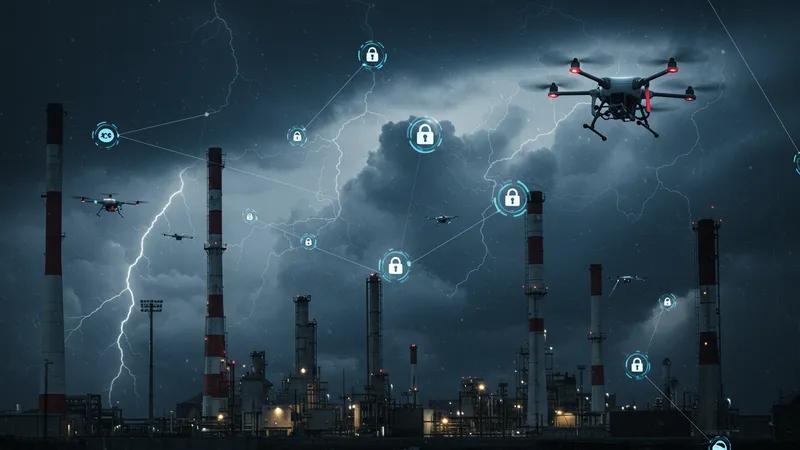
Technical challenges also abound. Operating drones in adverse weather conditions can lead to data inaccuracies, while sensor networks could be susceptible to cyber-attacks. However, the industry is responding with improved encryption and robust cybersecurity measures, ensuring that data integrity is not compromised. Yet, there’s another layer of complexity to untangle...
Cost is another elephant in the room. While the long-term savings are significant, the initial investment required is substantial. Small businesses may struggle to keep up with these capital demands, despite the potential cost efficiencies that follow. But, there’s an innovative workaround shaking things up...
Partnerships and collaborations are emerging as a way to distribute costs, with several companies pooling resources to implement these technologies collectively. This collective approach not only reduces financial strain but promotes cross-industry knowledge sharing, leading to even more robust solutions. This cooperative model might just be the game-changer nobody expected...
Let’s take a deep dive into one of the less glamorous yet crucial aspects—regulation. Strict safety protocols govern how drones and sensors are used in industrial applications. These rules ensure that while innovation surges ahead, safety isn't compromised. But there's more than meets the eye...
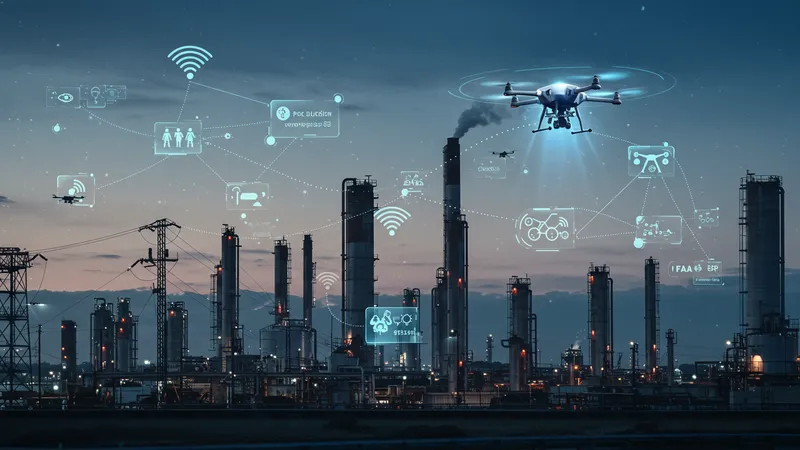
In the U.S., the Federal Aviation Administration (FAA) has been actively shaping guidelines for UAV deployment, ensuring they don’t interfere with existing aerial traffic. This meticulous oversight is mirrored globally, but it adds a layer of complexity to the rollout. But that’s just the start of the regulatory tapestry...
Safety standards aren’t just about preventing accidents; they’re setting benchmarks for quality assurance and operational excellence. Companies adhering to these protocols are experiencing a ripple effect of benefits, from enhanced reputation to increased stakeholder confidence. However, there is a revelatory twist to these regulations...
There's a push from certain environmental watchdogs advocating for even stricter guidelines to ensure minimal ecological disturbance. These debates are fueling a dialogue that could reshape environmental policies worldwide. The next chapter might see a coalition of technology and eco-aware practices that redefine sustainability in the industry...
All eyes are on industry leaders who are bravely adopting these tech advancements. Certain companies are at the forefront, not merely dabbling but fully embedding technology to revamp their pipeline maintenance methodologies. It’s changing how entire sectors approach their logistical challenges. But are they really leading the way in innovation or just scratching the surface?
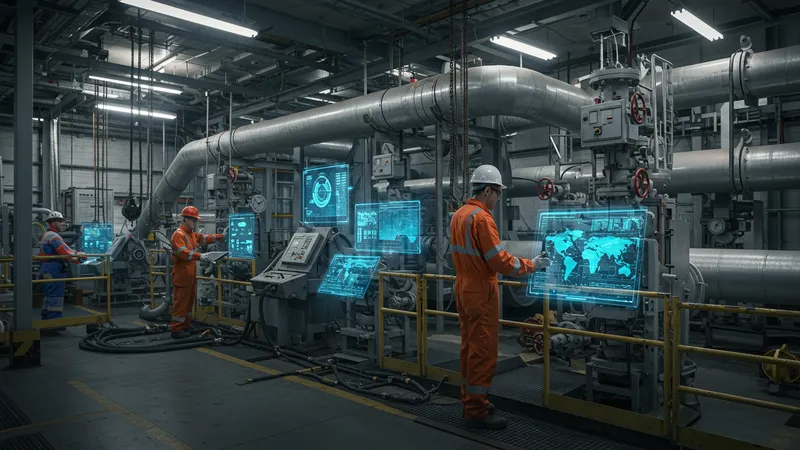
Oil and gas giants have reported significant reductions in downtime and reported maintenance costs, thanks to their forward-thinking tech investments. What’s groundbreaking is how they've embedded tech into daily operations, not as auxiliary gadgets, but as core components of their business strategy. But the icing on the cake is the competitive edge this integration offers...
Mid-sized players are also getting into the act, with tech adoption leveling the competitive playing field. As smaller companies leverage drones and sensors, they're beginning to match the efficiencies of their larger counterparts. This democratization of tech access is shaking up traditional market dynamics. Yet, a surprising consequence lies ahead...
The most intriguing outcome is the blurring lines between tech firms and traditional businesses. There’s a growing trend of cross-industry collaborations, with tech companies becoming strategic partners rather than just vendors. This convergence is spawning new business models and revenue streams that redefine industry standards. Brace yourself as we delve into what this means for the future...
When drones and sensors collect data, the volume is staggering. But data alone is not valuable until transformed into actionable insights. Companies are now building robust analytic frameworks that turn raw data into strategic goldmines. But, what if I told you some are still missing the plot?

Data analytics has moved from mere descriptive statistics to predictive modeling. Industries now have the foresight, identifying potential corrosion hotspots before they become critical failures. This new-age crystal ball offers a proactive approach unseen before. Yet, someone’s not taking full advantage...
The true challenge lies in the silos within organizational structures. Many still struggle with integrating these insights across departments for unified decision-making. This is a key barrier to unlocking the full potential of the tech revolution. But there's a solution lying in plain sight...
Enter data democratization, a movement where information is freely accessible across all organizational levels. This is helping companies become not just data-driven but data-empowered, enabling faster, informed decisions and improved outcomes. The full ramifications of this shift are just beginning to unfold, promising another layer of transformation no one wants to miss...
As we stand on the brink of 2025, what’s next on the horizon for drone and sensor technology? The pace of innovation is relentless, and industry experts predict even daintier, quicker, more intuitive devices. But with great progress comes an unexpected challenge...

Autonomous drones capable of machine learning are in development, aiming to make real-time decisions without human intervention. This could radically change how data is collected and processed, offering unprecedented autonomy to operations. But there's a wrinkle...
Ethical considerations are coming to the forefront. Questions regarding data privacy and airspace safety are prompting a re-evaluation of how these technologies are deployed. Consensus in this area is far from reached, adding a layer of complexity to the tech proliferation. Yet, hope remains...
Emerging from this debate is a potential rise in public-private partnerships, combining the strengths of regulatory frameworks and cutting-edge technology. This could pave the way for seamlessly integrating more advanced technologies, heralding a new era of pipeline management that once seemed like a distant dream. The future is closer than it appears...
Pipelines across the globe are benefitting from these advances, with a few case studies shining a light on their transformative power. These stories reveal the nuances and complexities of real-world integration. Come discover the champions leading this reinvention...
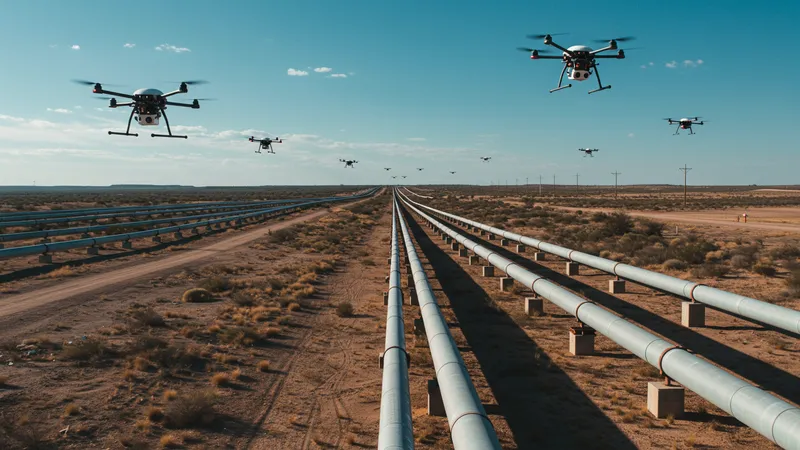
The Texas-based project showcased drones operating in tandem with sensor platforms to monitor an expansive pipeline network. The results? A significant reduction in error rates and maintenance overheads. However, the most captivating detail is...
The environmental angle became a focal point. By reducing potential leaks, the project assured stakeholders of its commitment to environmental stewardship, resulting in increased community support. Still, the project's full implications stretch further...
In Norway, cutting-edge sensors have been critical in adapting pipelines to harsh maritime conditions. The synergy between these technologies creates a robust buffer against natural challenges, setting new precedents in resilience and innovation. But let’s dive deeper into what this means globally...
Adopting these technologies isn't without its hurdles. Initial skepticism, substantial upfront costs, and lengthy regulatory approvals pose significant challenges. Yet, companies are finding innovative ways around these barriers, leading to unexpected breakthroughs...
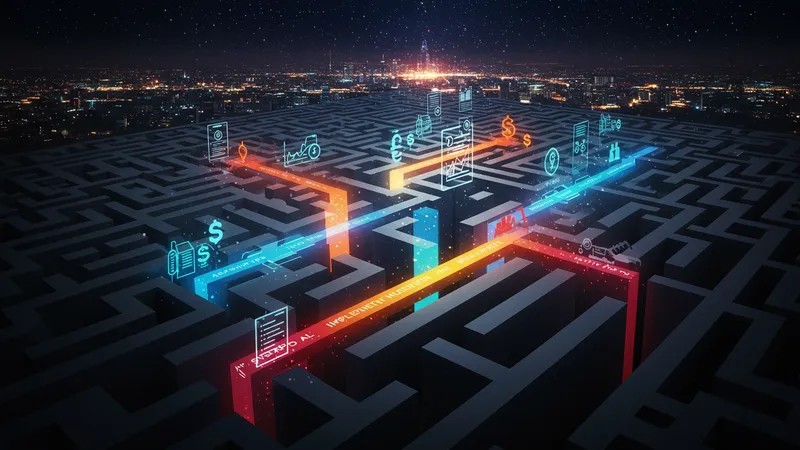
Government incentives are one such method, easing the financial burden of technology adoption. Subsidies and tax breaks are encouraging industry-wide shifts, and this governmental backing is fostering an atmosphere ripe for innovation. But the plot thickens...
On the collaboration front, traditional rivals are forming alliances, sharing costs, and pooling resources to make these technologies widely accessible. This unprecedented cooperation is reshaping competitive landscapes and ushering in a more collaborative era. There's more to this trend than meets the eye...
Finally, educational initiatives are upskilling the workforce, empowering teams to leverage this technology effectively. As a growing number of professionals become proficient in handling drones and sensors, the workforce's evolution is central to a seamless transformation. The stakes are high, but the potential rewards are even higher...
Interestingly, the applications for these technologies extend beyond corrosion detection. They’re revolutionizing industries from agriculture to environmental conservation. The ability to innovate in just one sector has cascading effects far beyond its core focus...

Agriculture has witnessed drones optimizing pest control measures, scanning fields with pinpoint accuracy to ensure healthy crop yields. This is just the beginning of drones' expansive potential in non-linear applications. But a deeper narrative unfolds...
Environmental monitoring is another promising sector. Drones combined with sensor technology offer unprecedented capabilities in wildlife protection and habitat preservation. Their use is becoming an integral tool for conservationists worldwide. Now for the most radical application...
Urban planning and disaster management are reaping benefits too. From mapping urban growth to assessing damage in post-disaster scenarios, the technological prowess of drones and sensors offers unmatched agility and precision. These capabilities hint at a future where integration creates unexpected synergies across diverse fields...
With growing adoption, the demand for skilled operatives is rising sharply. Training institutes are now focusing on grooming the next generation of specialists adept in drone and sensor technology, which promises to redefine career trajectories...

Universities are offering dedicated courses focused not only on technical know-how but also on innovative thinking and problem-solving capabilities. The industry requires not just tech experts but those who can think strategically about applications and implications. But there's a twist in the educational realm...
Virtual reality-based training is taking root, offering immersive experiences for trainees, leading to higher proficiency levels upon course completion. This leap in educational methods is removing geographical barriers and opening new doors for aspiring professionals. Yet, there’s another educational development to uncover...
Collaboration between tech firms and academic institutions is intensifying, resulting in curriculum that’s aligned with real-world applications. Graduates are entering the workforce ready to meet evolving demands, ensuring a pipeline of talent that’s equipped to drive future innovations. The full impact of this educational evolution is truly transformative...
The integration of drone and sensor technology heralds a new epoch in pipeline management, compelling both opportunities and challenges. From fortifying infrastructure to ecological mindfulness, the potential is limitless, but it requires careful navigation across societal and ethical considerations...
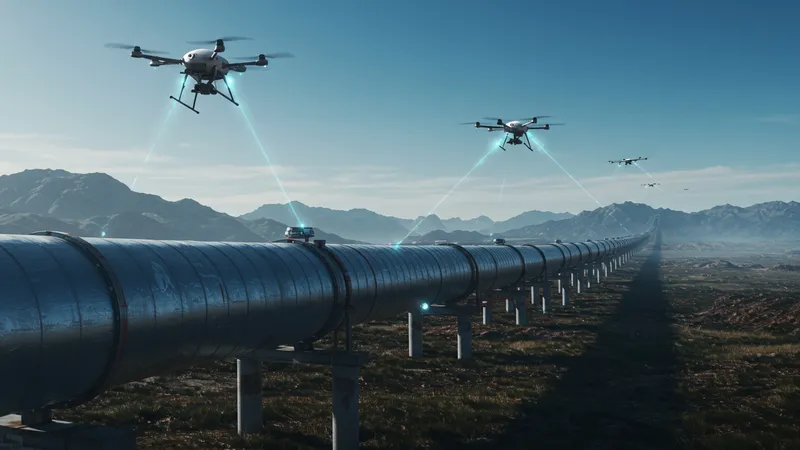
With cost savings, enhanced safety, and environmental protection as central tenets, the adoption of these technologies stands as a testament to the industry’s commitment to innovation. Yet, as we advance, mindful stewardship will determine the broader impact of this technological surge.
The real call to action lies in broadening adoption, encouraging cross-industry collaboration, and fostering talents that can harness the full potential of these game-changing technologies. Share this narrative and be part of the transformative movement redefining industrial standards! Let's embark on this future together, embracing change for a smarter, safer, and more sustainable tomorrow.